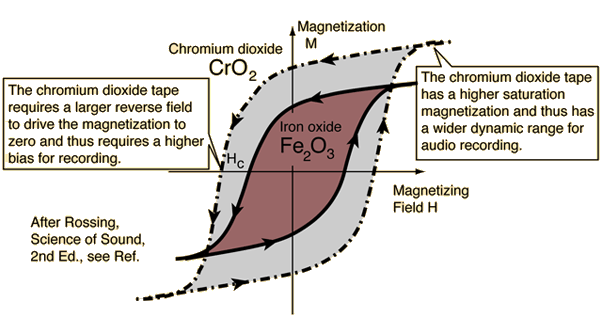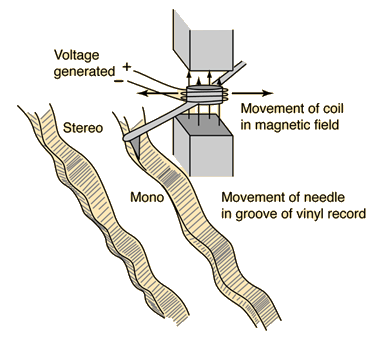Equalization for Tape Playback
When a magnetic image of a sound signal is recorded onto tape with optimum bias, the magnetization of the tape is linearly proportional to the signal voltage applied to the head.
The playback process, depends not only upon the magnetization of the tape which passes under the playback head but also upon its frequency. By Faraday's law:

The output signal voltage then increases by a factor of two for each octave rise in frequency f, so an equalization circuit must be employed to reduce the signal back to proper balance. A factor of two in voltage is 6 decibels in power, so the equalization circuit must increase its attenuation 6 dB per octave.
Sound reproduction concepts
Tape recording concepts
| HyperPhysics***** Sound | R Nave |


